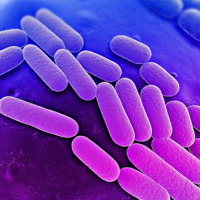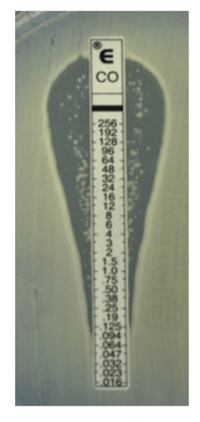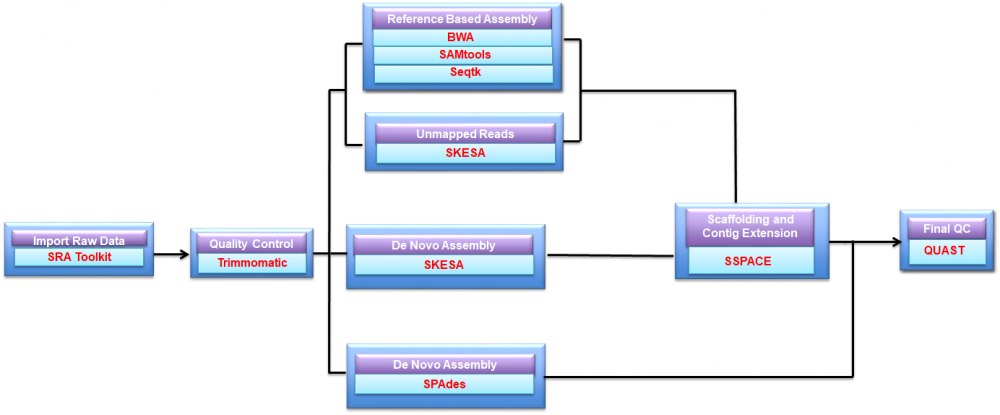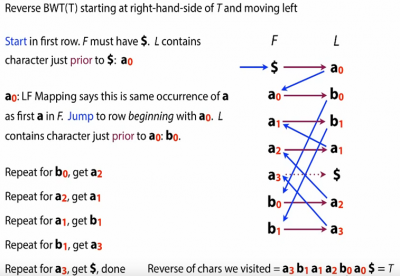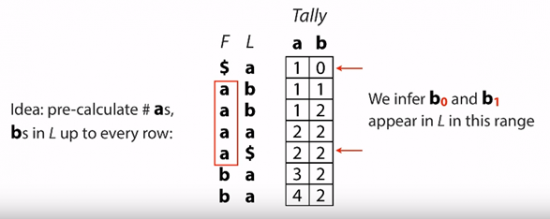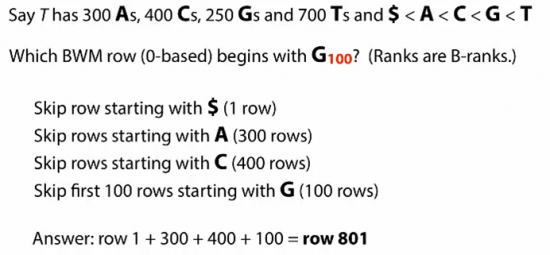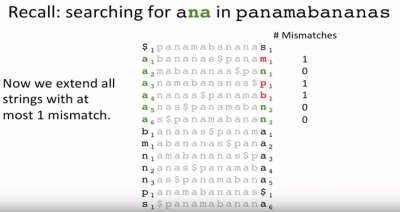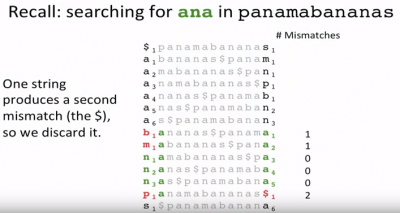Team I Genome Assembly Group
The group is conducting its discussions, planning, etc. on the Open Academic Environment. Our group is public.
Introduction
Bacterial Genomics
Bacterial genomics is the discipline that studies the genome of a bacteria and includes all hereditary information of that bacteria. Bacterial genomics helps study bacterial evolution as well as determine the causative agent in disease outbreaks. Additionally, it helps identify bacterial pathogens and how these interact with their host.

Resistance of bacteria against various antibiotics have been noted since the discovery of antibiotics and have been on a rise since then. This poses a challenge to treat patients that have acquired these multidrug resistant bacterial infections, especially immunocompromised patients who become susceptible to opportunistic pathogens that have resistance to virtually every antibiotic currently available. As the scientific and pharmaceutical world is battling against these antibiotic resistant strains, a new phenomenon has been discovered, heteroresistance. According to Valvano et.al., heteroresistance is a variable response showed by a population to a specific antibiotic [4]. Bacterial heteroresistance is a phenomenon that has been known for a while, but the actual mechanism of acquiring this resistance is unclear. Many mechanisms have been attributed to heteroresistance including a mutation in the gene of the PhoP protein involved in the PhoP/PhoQ pathway to gain resistance to colistin.
Many strains of Klebsiella pneumoniae have been identified to be resistant to all major antibiotics and have thus become of extreme interest and importance. Some of the resistance strategies used by this bacteria include release of carbapenem-hydrolyzing enzymes, oxacillin hydrolyzing enxymes, beta lactamases including plasmid-borne extended spectrum beta lactamases. Multi resistant K. pneumoniae (MRKP) have been found to resist third generation antibiotics such as cephalosporins, gentamycin, and tobramycin.
Figure 2. Klebsiella (http://healthcare.bioquell.com)
Klebsiella is a gram negative, non-motile rod shaped bacteria enclosed in a capsule which helps evade phagocytosis. These bacteria can be found singly, in pairs or as short chains. Klebsiella are facultative anaerobes and can perform both anaerobic respiration and fermentation. Species of Klebsiella, especially Klebsiella pneumoniae, are known to cause respiratory tract infections such as pneumonia and urinary tract infections. They release a number of virulence factors such as multiple adhesins, capsular polysaccharide, siderophores, and lipopolysaccharide that help resist host defenses.
Figure 3. Heteroresistant subpopulation [3]
The current study focuses on Klebsiella spp. that have been found to be genetically identical lacking the above mentioned mutation in the PhoP protein. "Genetically identical, but phenotypically distinct, subpopulation of colistin-resistant bacteria can mediate in vivo treatment failure" --David Weiss.
Objective
The objective of this project is to understand what causes Colistin heteroresistance in Klebsiella spp. For this to be done, the class was divided into two teams that would obtain the sequence reads from the David Weis lab to later assemble the genomes, predict genes, annotate genes, do comparative genomics and later create a predictive webserver that would serve as an online bioinformatics resource.
As the first group in the project, our objective and ultimate goal is to assemble genomes by combining sequence reads into contigs, contiguous stretches of DNA.
Data
For the data, the assembly group downloaded 258 Klebsiella spp. (paired-end reads; 250 base pairs in length) from NCBI SRA database.
Methods
Pipeline (General Workflow)
Pre-processing
Library Prep
Before sequencing, you must first prepare DNA libraries. Sample preparation begins with extracted and purified DNA.
The protocol consists of fragmentation and adapter ligation of genomic DNA, a process called tagmentation. During this process, an enzyme called transposome is able to simultaneously cleave the DNA molecule and ligate adapter sequences. Once the adapters have been ligated, reduced cycle amplification adds additional motifs, such as the sequencing primer binding sites, indices and regions that facilitate adhesion to the flow cell.
Paired-end sequencing enables both ends of the DNA fragment to be sequenced. Because the distance between each paired read is known, alignment algorithms can use this information to map the reads over repetitive regions more precisely. This results in better alignment of reads, especially across difficult to sequence, repetitive regions of the genome.
After cluster generation and sequencing by synthesis occurs, the output is a FASTq file. Understanding what the output file contains is important to be able to choose a workflow that includes trimming and quality control in the genome assembly.
Trimming
Before building the assemblies, the presence of poor quality and technical sequences must be identified so that an optimal downstream analysis of the data is facilitated.
For this part, the group decided to use Trimmomatic, a pair-aware and efficient preprocessing tool, optimized for Illumina NGS data [PMID: 24695404]. Trimmomatic is a multi tasking trimming tool that is able to simultaneously perform adapter trimming, quality trimming, and force trimming. There are three functions implemented in trimming. ILLUMINACLIP trims adapter sequences in the reads. SLIDINGWINDOW trims the reads based on the threshold quality score set by a user. The threshold for SLIDINGWINDOW was set for 4:20, and the program scans the reads with a 4-base wide sliding window, cutting when the average quality per base drops below 20. MINLEN drops reads if they are below an assigned length. The minimum length was set to 20, and any reads below 20 were discarded.
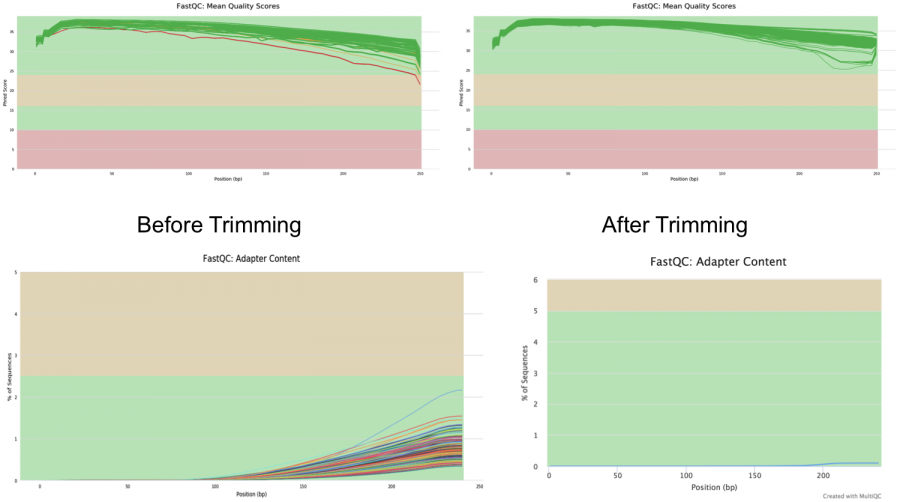 Figure 4. Quality Control with Trimmomatic
Figure 4. Quality Control with Trimmomatic
The parameters used on Trimmomatic were the following:
because...
Assembly
Reference Assembly
Reference Assembly is performed when close reference genome is present. The basic idea of reference is taking the reads, mapping onto the reference genome, collecting all overlapping reads and producing consensus sequence.
Since we did not know the species for the reads, we used Mash tool for selecting reference genome. We evaluated mutation distance between each of our sample genomes and complete genomes of Klebsiella downloaded from NCBI database and selected the lowest distance sample-reference pair. Mash tool uses MinHash algorithm for estimation of global mutation distance. Mash creates vastly reduced representations of sequences by creating sketches before comparison. Sketches are used by MinHash algorithm for fast distance estimation with low storage and memory requirements.
On selection of reference genome, assembly was performed using Burrow's Wheeler Aligner.
Algorithms
Burrows–Wheeler Transform(BWT)
Originally, Burrows–Wheeler transformation(aka BWT) was designed for data compression purpose[5]. This transformation stood out for being reversible, without needing to store any additional data. After the invention of Next Generation Sequencing (NGS), BWT had its application in bioinformatics. Tools implementing BWT (such as Bowtie[6] and BWA[7] etc) were created to map short reads to a reference.
There are three main steps in using BWT: 1) Sort all rotations of the text into lexicographic order ($ always as the first row). Keep the first and last column and index information. [1]
2) Invert the BWT matrix (BWM). [2]
Example: [3]
3) Map patterns to the data structure [4]
De Bruijn graph
Software
"de Novo" Assembly
Results
Discussion
Conclusions
References
1. Perna, Nicole T., Guy Plunkett III, Valerie Burland, Bob Mau, Jeremy D. Glasner, Debra J. Rose, George F. Mayhew et al. "Genome sequence of enterohaemorrhagic Escherichia coli O157: H7." Nature 409, no. 6819 (2001): 529.
2. Bergey, David Hendricks, Robert Stanley Breed, Everitt George Dunne Murray, and A. Parker Hitchens. Bergey's manual of determinative bacteriology. Baltimore: Williams & Wilkins, 1934.
3. Jayol, Aurélie, Patrice Nordmann, Adrian Brink, and Laurent Poirel. "Heteroresistance to colistin in Klebsiella pneumoniae associated with alterations in the PhoPQ regulatory system." Antimicrobial agents and chemotherapy 59, no. 5 (2015): 2780-2784.
4. El-Halfawy, O. M., and Valvano, M. A. (2013) Chemical communication of antibiotic resistance by a highly resistant subpopulation of bacterial cells. PLoS One 8, e68874
5. Burrows, Michael, and David J. Wheeler. "A block-sorting lossless data compression algorithm." (1994).
6. Langmead, Ben, Cole Trapnell, Mihai Pop, and Steven L. Salzberg. "Ultrafast and memory-efficient alignment of short DNA sequences to the human genome." Genome biology 10, no. 3 (2009): R25.
7. Li, Heng, and Richard Durbin. "Fast and accurate short read alignment with Burrows–Wheeler transform." Bioinformatics 25, no. 14 (2009): 1754-1760.
